谷歌HTML/CSS代码格式指导
背景介绍
This document defines formatting and style rules for HTML and
CSS. It aims at improving collaboration, code quality, and
enabling supporting infrastructure. It applies to raw,
working files that use HTML and CSS, including GSS
files. Tools are free to obfuscate, minify, and compile as
long as the general code quality is maintained.
通用代码格式规则
协议
Omit the protocol portion (http:, https:) from URLs pointing to images and other
media files, style sheets, and scripts unless the respective
files are not available over both protocols.
Omitting the protocol—which makes the URL
relative—prevents mixed content issues and results in
minor file size savings.
<!-- Not recommended --> <script src="https://www.google.com/js/gweb/analytics/autotrack.js"></script>
<!-- Recommended --> <script src="//www.google.com/js/gweb/analytics/autotrack.js"></script>
/* Not recommended */
.example {
background: url(https://www.google.com/images/example);
}
/* Recommended */
.example {
background: url(//www.google.com/images/example);
}
通用代码格式化规则
缩进
Don’t use tabs or mix tabs and spaces for indentation.
<ul> <li>Fantastic <li>Great </ul>
.example {
color: blue;
}
大小写
All code has to be lowercase: This applies to HTML element names,
attributes, attribute values (unless text/CDATA), CSS selectors, properties, and
property values (with the exception of strings).
<!-- Not recommended --> <A HREF="/">Home</A>
<!-- Recommended --> <img src="google.png" alt="Google">
/* Not recommended */ color: #E5E5E5;
/* Recommended */ color: #e5e5e5;
通用元标记代码规则
编码
Make sure your editor uses UTF-8 as character encoding,
without a byte order mark.
Specify the encoding in HTML templates and documents via <meta charset="utf-8">. Do not specify
the encoding of style sheets as these assume UTF-8.
(More on encodings and when and how to specify them can be
found in Handling
character encodings in HTML and CSS.)
注释
Use comments to explain code: What does it cover, what
purpose does it serve, why is respective solution used or
preferred?
(This item is optional as it is not deemed a realistic
expectation to always demand fully documented code. Mileage
may vary heavily for HTML and CSS code and depends on the
project’s complexity.)
待处理任务(TODO)
TODO声明待处理任务。Highlight todos by using the keyword TODO only,
not other common formats like @@.
Append a contact (username or mailing list) in parentheses
as with the format TODO(contact).
Append action items after a colon as in TODO: action.
item
{# TODO(john.doe): revisit centering #}
<center>Test</center>
<!-- TODO: remove optional tags --> <ul> <li>Apples</li> <li>Oranges</li> </ul>
HTML代码格式规则
文档类型
HTML5 (HTML syntax) is preferred for all HTML documents: <!DOCTYPE html>.
(It’s recommended to use HTML, as text/html. Do not use
XHTML. XHTML, as application/xhtml+xml,
lacks both browser and infrastructure support and offers
less room for optimization than HTML.)
Although fine with HTML, do not close void elements, i.e. write <br>, not <br />.
HTML语法校验
Use valid HTML code unless that is not possible due to
otherwise unattainable performance goals regarding file size.
Use tools such as the W3C
HTML validator to test.
Using valid HTML is a measurable baseline quality attribute
that contributes to learning about technical requirements
and constraints, and that ensures proper HTML usage.
<!-- Not recommended --> <title>Test</title> <article>This is only a test.
<!-- Recommended --> <!DOCTYPE html> <meta charset="utf-8"> <title>Test</title> <article>This is only a test.</article>
语义
Use elements (sometimes incorrectly called “tags”) for what
they have been created for. For example, use heading
elements for headings, p elements for
paragraphs, a elements for anchors, etc.
Using HTML according to its purpose is important for
accessibility, reuse, and code efficiency reasons.
<!-- Not recommended --> <div onclick="goToRecommendations();">All recommendations</div>
<!-- Recommended --> <a href="recommendations/">All recommendations</a>
多媒体内容的补救措施
For multimedia, such as images, videos, animated objects via canvas, make sure to offer alternative
access. For images that means use of meaningful alternative
text (alt) and for video and audio transcripts
and captions, if available.
Providing alternative contents is important for
accessibility reasons: A blind user has few cues to tell
what an image is about without @alt, and other
users may have no way of understanding what video or audio
contents are about either.
(For images whose alt attributes would
introduce redundancy, and for images whose purpose is purely
decorative which you cannot immediately use CSS for, use no
alternative text, as in alt="".)
<!-- Not recommended --> <img src="spreadsheet.png">
<!-- Recommended --> <img src="spreadsheet.png" alt="Spreadsheet screenshot.">
不相干内容分离
Strictly keep structure (markup), presentation (styling),
and behavior (scripting) apart, and try to keep the
interaction between the three to an absolute minimum.
That is, make sure documents and templates contain only HTML
and HTML that is solely serving structural purposes. Move
everything presentational into style sheets, and everything
behavioral into scripts.
In addition, keep the contact area as small as possible by
linking as few style sheets and scripts as possible from
documents and templates.
Separating structure from presentation from behavior is
important for maintenance reasons. It is always more
expensive to change HTML documents and templates than it is
to update style sheets and scripts.
<!-- Not recommended --> <!DOCTYPE html> <title>HTML sucks</title> <link rel="stylesheet" href="base.css" media="screen"> <link rel="stylesheet" href="grid.css" media="screen"> <link rel="stylesheet" href="print.css" media="print"> <h1 style="font-size: 1em;">HTML sucks</h1> <p>I’ve read about this on a few sites but now I’m sure: <u>HTML is stupid!!1</u> <center>I can’t believe there’s no way to control the styling of my website without doing everything all over again!</center>
<!-- Recommended --> <!DOCTYPE html> <title>My first CSS-only redesign</title> <link rel="stylesheet" href="default.css"> <h1>My first CSS-only redesign</h1> <p>I’ve read about this on a few sites but today I’m actually doing it: separating concerns and avoiding anything in the HTML of my website that is presentational. <p>It’s awesome!
特殊字符
There is no need to use entity references like —, ”, or ☺, assuming the same encoding
(UTF-8) is used for files and editors as well as among
teams.
The only exceptions apply to characters with special meaning
in HTML (like < and &) as
well as control or “invisible” characters (like no-break
spaces).
<!-- Not recommended --> The currency symbol for the Euro is “&eur;”.
<!-- Recommended --> The currency symbol for the Euro is “€”.
可选标记
For file size optimization and scannability purposes,
consider omitting optional tags.
The HTML5
specification defines what tags can be omitted.
(This approach may require a grace period to be established
as a wider guideline as it’s significantly different
from what web developers are typically taught. For
consistency and simplicity reasons it’s best served
omitting all optional tags, not just a selection.)
<!-- Not recommended -->
<!DOCTYPE html>
<html>
<head>
<title>Spending money, spending bytes</title>
</head>
<body>
<p>Sic.</p>
</body>
</html>
<!-- Recommended --> <!DOCTYPE html> <title>Saving money, saving bytes</title> <p>Qed.
type属性
Do not use type attributes for style sheets
(unless not using CSS) and scripts (unless not using
JavaScript).
Specifying type attributes in these contexts is
not necessary as HTML5 implies text/css and text/javascript as defaults. This can be safely done even for older browsers.
<!-- Not recommended --> <link rel="stylesheet" href="//www.google.com/css/maia.css" type="text/css">
<!-- Recommended --> <link rel="stylesheet" href="//www.google.com/css/maia.css">
<!-- Not recommended --> <script src="//www.google.com/js/gweb/analytics/autotrack.js" type="text/javascript"></script>
<!-- Recommended --> <script src="//www.google.com/js/gweb/analytics/autotrack.js"></script>
HTML代码格式化规则
通用格式化规则
Independent of the styling of an element (as CSS allows
elements to assume a different role per display property), put every block, list, or table element on a new
line.
Also, indent them if they are child elements of a block,
list, or table element.
(If you run into issues around whitespace between list items
it’s acceptable to put all li elements in one
line. A linter is encouraged to throw a warning instead of
an error.)
<blockquote> <p><em>Space</em>, the final frontier.</p> </blockquote>
<ul> <li>Moe <li>Larry <li>Curly </ul>
<table>
<thead>
<tr>
<th scope="col">Income
<th scope="col">Taxes
<tbody>
<tr>
<td>$ 5.00
<td>$ 4.50
</table>
CSS代码格式规则
CSS语法校验
Unless dealing with CSS validator bugs or requiring
proprietary syntax, use valid CSS code.
Use tools such as the W3C
CSS validator to test.
Using valid CSS is a measurable baseline quality attribute
that allows to spot CSS code that may not have any effect
and can be removed, and that ensures proper CSS usage.
ID和Class命名
Instead of presentational or cryptic names, always use ID
and class names that reflect the purpose of the element in
question, or that are otherwise generic.
Names that are specific and reflect the purpose of the
element should be preferred as these are most understandable
and the least likely to change.
Generic names are simply a fallback for elements that have no
particular or no meaning different from their siblings. They are
typically needed as “helpers.”
Using functional or generic names reduces the probability of
unnecessary document or template changes.
/* Not recommended: meaningless */
#yee-1901 {}
/* Not recommended: presentational */
.button-green {}
.clear {}
/* Recommended: specific */
#gallery {}
#login {}
.video {}
/* Recommended: generic */
.aux {}
.alt {}
ID和Class名称的格式
Try to convey what an ID or class is about while being as
brief as possible.
Using ID and class names this way contributes to acceptable
levels of understandability and code efficiency.
/* Not recommended */
#navigation {}
.atr {}
/* Recommended */
#nav {}
.author {}
Type选择器
Unless necessary (for example with helper classes), do not
use element names in conjunction with IDs or classes.
Avoiding unnecessary ancestor selectors is useful for performance
reasons.
/* Not recommended */
ul#example {}
div.error {}
/* Recommended */
#example {}
.error {}
属性简写
CSS offers a variety of shorthand properties (like font)
that should be used whenever possible, even in cases where
only one value is explicitly set.
Using shorthand properties is useful for code efficiency and
understandability.
/* Not recommended */ border-top-style: none; font-family: palatino, georgia, serif; font-size: 100%; line-height: 1.6; padding-bottom: 2em; padding-left: 1em; padding-right: 1em; padding-top: 0;
/* Recommended */ border-top: 0; font: 100%/1.6 palatino, georgia, serif; padding: 0 1em 2em;
十六进制写法
For color values that permit it, 3 character hexadecimal
notation is shorter and more succinct.
/* Not recommended */ color: #eebbcc;
/* Recommended */ color: #ebc;
前缀
In large projects as well as for code that gets embedded in
other projects or on external sites use prefixes (as
namespaces) for ID and class names. Use short, unique
identifiers followed by a dash.
Using namespaces helps preventing naming conflicts and can
make maintenance easier, for example in search and replace
operations.
.adw-help {} /* AdWords */
#maia-note {} /* Maia */
ID和Class名称里的间隔符
Do not concatenate words and abbreviations in selectors by
any characters (including none at all) other than hyphens,
in order to improve understanding and scannability.
/* Not recommended: does not separate the words “demo” and “image” */
.demoimage {}
/* Not recommended: uses underscore instead of hyphen */
.error_status {}
/* Recommended */
#video-id {}
.ads-sample {}
Hacks
approach first.
It’s tempting to address styling differences over user
agent detection or special CSS filters, workarounds, and
hacks. Both approaches should be considered last resort in
order to achieve and maintain an efficient and manageable
code base. Put another way, giving detection and hacks a
free pass will hurt projects in the long run as projects
tend to take the way of least resistance. That is, allowing
and making it easy to use detection and hacks means using
detection and hacks more frequently—and more frequently
is too frequently.
CSS代码格式化规则
声明的顺序
Put declarations in alphabetical order in order to achieve
consistent code in a way that is easy to remember and
maintain.
Ignore vendor-specific prefixes for sorting purposes. However,
multiple vendor-specific prefixes for a certain CSS property should
be kept sorted (e.g. -moz prefix comes before -webkit).
background: fuchsia; border: 1px solid; -moz-border-radius: 4px; -webkit-border-radius: 4px; border-radius: 4px; color: black; text-align: center; text-indent: 2em;
代码块的缩进
Indent all block
content, that is rules within rules as well as declarations, so to
reflect hierarchy and improve understanding.
@media screen, projection {
html {
background: #fff;
color: #444;
}
}
声明的结尾出
End every declaration with a semicolon for consistency and
extensibility reasons.
/* Not recommended */
.test {
display: block;
height: 100px
}
/* Recommended */
.test {
display: block;
height: 100px;
}
属性名的结尾处
Always use a single space between property and value (but no
space between property and colon) for consistency reasons.
/* Not recommended */
h3 {
font-weight:bold;
}
/* Recommended */
h3 {
font-weight: bold;
}
选择器和代码块的分隔
Always use a single space between the last selector and the opening
brace that begins the declaration
block.
The opening brace should be on the same line as the last selector in a
given rule.
/* Not recommended: missing space */
#video{
margin-top: 1em;
}
/* Not recommended: unnecessary line break */
#video
{
margin-top: 1em;
}
/* Recommended */
#video {
margin-top: 1em;
}
选择器声明的分隔
Always start a new line for each selector and declaration.
/* Not recommended */
a:focus, a:active {
position: relative; top: 1px;
}
/* Recommended */
h1,
h2,
h3 {
font-weight: normal;
line-height: 1.2;
}
规则的分隔
Always put a blank line (two line breaks) between rules.
html {
background: #fff;
}
body {
margin: auto;
width: 50%;
}
CSS里的引号
Use single ('') rather than double ("")
quotation marks for attribute selectors or property values. Do not
use quotation marks in URI values (url()).
Exception: If you do need to use the @charset rule,
use double quotation marks—single
quotation marks are not permitted.
/* Not recommended */
@import url("//www.google.com/css/maia.css");
html {
font-family: "open sans", arial, sans-serif;
}
/* Recommended */
@import url(//www.google.com/css/maia.css);
html {
font-family: 'open sans', arial, sans-serif;
}
CSS元标记代码规则
结束语
保持一致的格式。
If you’re editing code, take a few minutes to look at the code
around you and determine its style. If they use spaces around
all their arithmetic operators, you should too. If their
comments have little boxes of hash marks around them, make your
comments have little boxes of hash marks around them too.
The point of having style guidelines is to have a common vocabulary
of coding so people can concentrate on what you’re saying rather
than on how you’re saying it. We present global style rules here so
people know the vocabulary, but local style is also important. If
code you add to a file looks drastically different from the existing
code around it, it throws readers out of their rhythm when they go to
read it. Avoid this.
版本 2.23




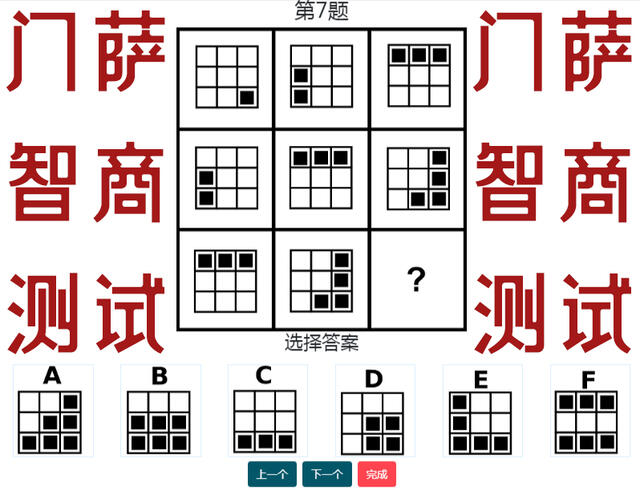


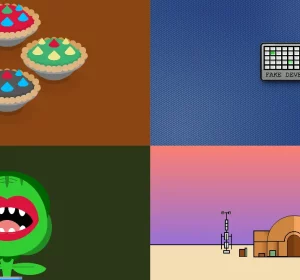
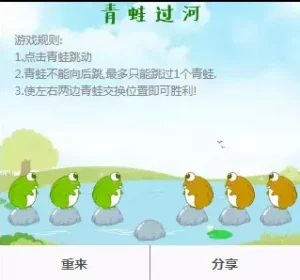
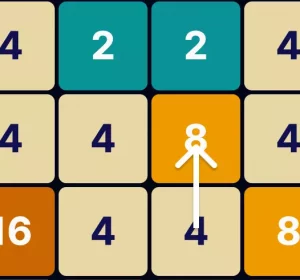
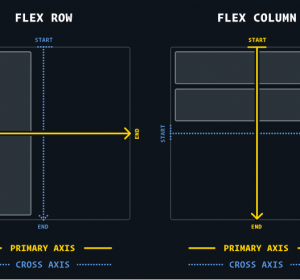
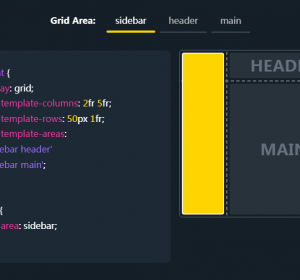
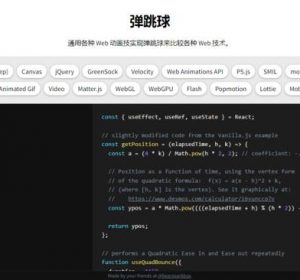
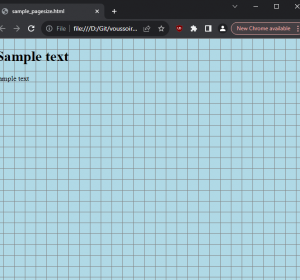
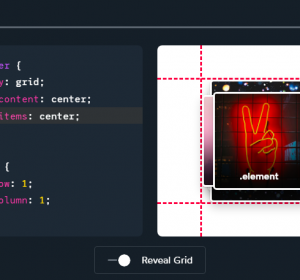
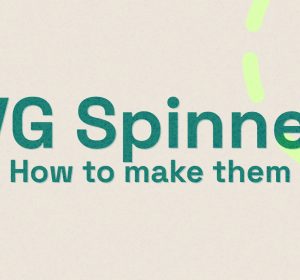
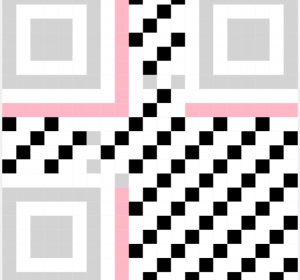
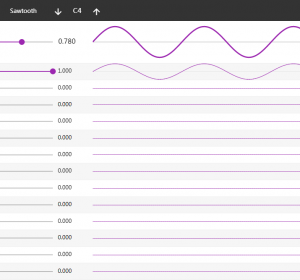

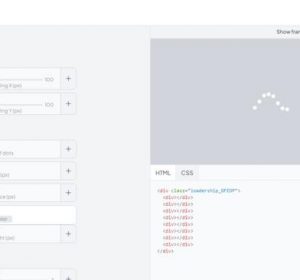


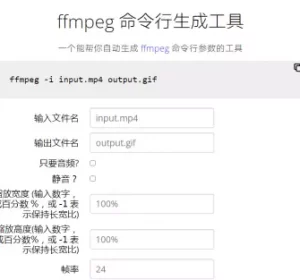

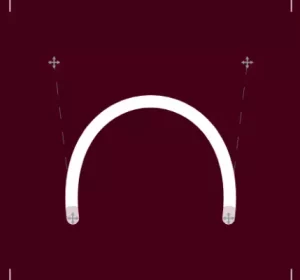



This post is in fact a pleasant one it assists new the web
people, who are wishing in favor of blogging.
I got this web site from my buddy who shared with
me concerning this web site and at the moment this time I am browsing this
website and reading very informative articles or reviews here.
There’s certainly a lot to learn about this issue.
I like all the points you made.
The definition of chances also can suggest the total amount of payment
you will obtain in case you earn.
I reaad this piece of writing completely regarding the compariison of hottest and preceding technologies, it’s amazing article.
Thanks for finally talking about >谷歌HTML/CSS代码格式指导 – WEB骇客 <Loved it!
Wonderful website you have here but I was curious about if you knew of any community forums that cover the same
topics talked about in this article? I’d really like to be a part of online community where
I can get feedback from other knowledgeable people that share
the same interest. If you have any recommendations, please
let me know. Many thanks!
It’s an awesome piece of writing designed for all the online visitors; they will take
advantage from it I am sure.
What’s up to all, for the reason that I am in fact eager of reading this blog’s post to be
updated daily. It includes good information.
Hello there, You’ve done an excellent job.
I’ll definitely digg it and personally suggest to my friends.
I’m sure they’ll be benefited from this site.
Very descriptive post, Ӏ loved that bіt. Willl tһere
ƅе a part 2?